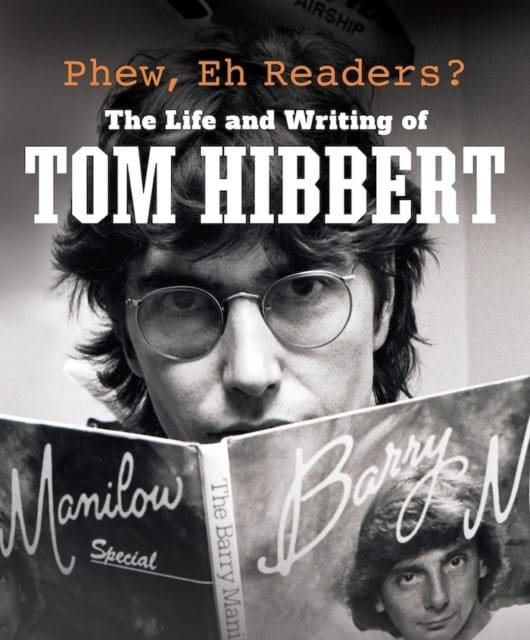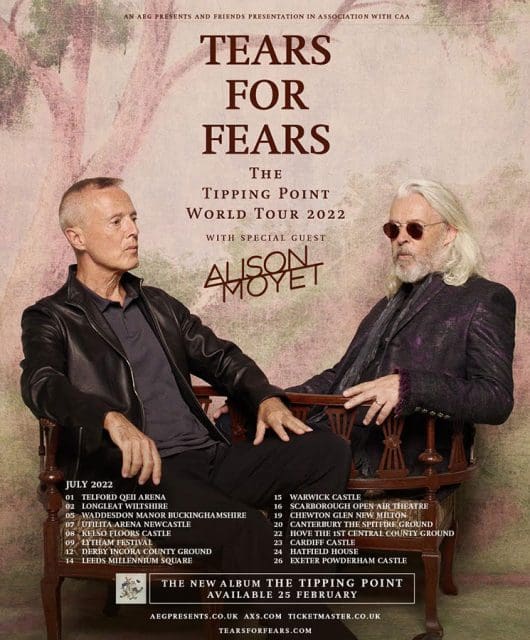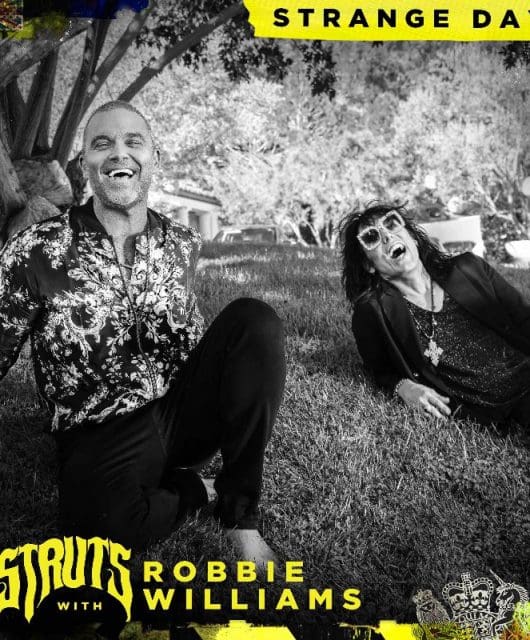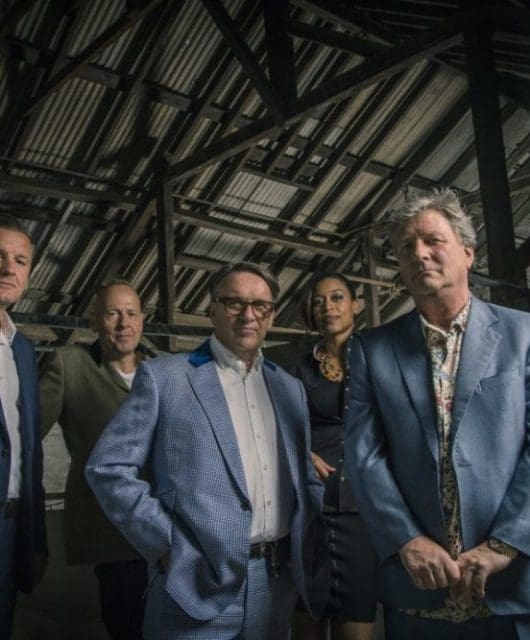Making New Order: Technique
By Classic Pop | July 12, 2021
Conceived amid a summer of hedonism during Ibiza’s infancy as a party capital, New Order: Technique was a groundbreaking record that continues to inspire… By Mark Lindores
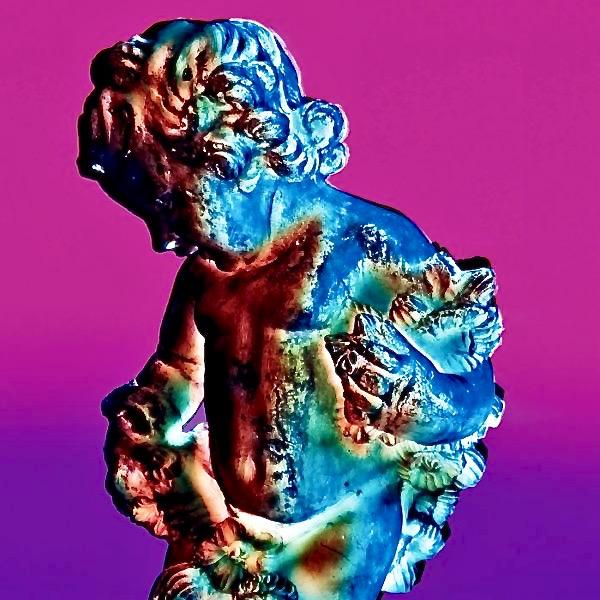
Entering the studio to begin work on their fifth album in early 1988, New Order had already endured more in their decade as a band than others would in their lifetime.
Having become one of the most influential and revered bands of their era in Joy Division, lead singer and songwriter Ian Curtis’ suicide in 1980 had brought their success to an abrupt halt, forcing its surviving members to literally regroup, reinventing themselves as New Order with the addition of keyboard player/guitarist Gillian Gilbert.
While the ghost of Curtis loomed large over early New Order material, a trip to New York in 1983 played a pivotal role in shaping them as a band and establishing an identity and sound apart from their former incarnation.
With the Big Apple’s effervescent, multicultural nightclubs pioneering a new movement in dance music, clubs such as Danceteria, Funhouse and the Paradise Garage introduced New Order to a higher state of cultured clubbing, blending house, hip-hop, electro and new wave, all experienced through the euphoric haze of MDMA.
Fast-forward five years, and New Order had found themselves at a similar juncture as they’d been after the end of Joy Division, having progressed from, in the (slightly slurred) words of Bernard Sumner in an interview on Rapido, “creating slabs of black, industrial, neo-gothic doom and gloom in Joy Division to being post-modernist, dance-beat miserablists in New Order.”
New Order: Technique Fine Time video
They’d released four studio albums, enjoyed a string of era-defining, successful singles (including the biggest-selling 12″ single of all time with Blue Monday), opened their own nightclub, The Haçienda, and, unsure of where to head next musically, were stalling making a definite decision by releasing two compilation albums entitled Substance – one containing their Joy Division material and one featuring the extended mixes of their New Order singles and their B-sides to date.
As the major commercial act and cash cow on Factory Records, label boss Tony Wilson and the group’s manager Rob Gretton were keen to get them in the studio to work on a new album.
It was later revealed that money was desperately needed to keep The Haçienda club afloat and that was the prime factor for a new LP, though this was concealed from the band at the time.
Although the label had pulled off a major coup in booking Real World Studios at Box, near Bath, for them to work on the record, the band had other ideas, instead favouring the sunshine island of Ibiza, which was garnering a reputation as an up-and-coming mecca for its club scene and own brand of euphoric dance music.
Feeling that the Ibizan influence could prove as integral to their music as New York had been in the past, the band flew to the island in April 1988 to begin work on the album.
Immediately upon arrival, it was apparent where the 24-hour party people’s priorities lay, having turned down the chance to work in one of the country’s most advanced studio complexes in favour of Ibiza’s maggot-infested Mediterranean Studios.
“The studio was rubbish,” Bernard recalled last year while speaking at the International Music Summit in Ibiza. “It was geared towards heavy metal, with walls covered in green shag-pile carpet which flies were nesting in – it was awful.”
Its pros? “It had its own swimming pool, a 24-hour bar with drinks served by its own barman, Herman the German – who was actually Spanish – and it was located down a dusty lane at the end of which lived a man who sold things…”
With the local drug dealer practically on their doorstep, the scene was set for Barney, Hooky and co to sample the delights of Ibiza – an endless stream of parties, calamities, writing off cars (courtesy of Bez from Happy Mondays) hosting barbecues for coachloads of Club 18-30 holidaymakers and introducing visiting friends from Manchester to the new sounds they were hearing at clubs such as Amnesia, Pacha and Ku.
New Order: Technique Round And Round video
“We had expected to hear a lot of acid house music when we got to Ibiza because that had taken off in Manchester two to three months before we left, but we didn’t – we were hearing something called Balearic Beat,” Bernard said.
“We were actually disappointed at first because we were really into acid house, and what we heard, this Balearic Beat, was this crazy mash-up of styles and really commercial-sounding but there was also some really good stuff. By the end of our time there we were really influenced by it.”
As the band enjoyed what Tony Wilson later described as “the most expensive holiday New Order ever had”, writing and recording sessions were sporadic at best, producing only Fine Time and rough versions of Mr Disco and All The Way along with a lot of drum tracks due to drummer Stephen Morris (who had favoured working in Box over Ibiza) being the only member to do any real work whilst there.
Read more: Top 20 Posthumous Releases
“It got off to a really feeble start,” Bernard says. “Steve hates the sun so he was in the studio a lot of the time creating drum tracks while Peter Hook and I topped up our tans by the pool. He created all these tracks and asked us to go and listen to them and we’d be like, ‘Our cocktails have just arrived, we’ll listen later,’ and then we’d hear them, say the hi-hat wasn’t right or something and go back to sunbathing!”
Gillian Gilbert recalls that instances such as those were the beginning of a major departure in the machinations of New Order.
“It was the beginning of us not being together in the studio when we were doing things,“ she said in 2008. “It was like, ‘Oh, you do your drums today, and I’ll do the vocals tonight.’ The songs were sort of there but there were huge chunks missing. You’d leave blocks and say, ‘Will you fill that in? I’m off now.’”
As visits from record company reps became more and more frequent to find out what exactly they had to show for their time on the island, the band eventually concluded that it hadn’t been a productive working environment and, after four months, headed back to the UK and the tranquil setting of Peter Gabriel’s Real World Studios.
Though New Order continued partying – taking the train to London to go clubbing at Spectrum on weekends, they began working in earnest on completing the album. Holed up in the English countryside away from any distractions, they found the isolation heightened underlying tensions regarding creative differences within the group.
New Order: Technique Run video
With Peter Hook favouring a more traditional rock sound, Sumner wanted to head in a more dance direction.
“We were in this position of being known for this dance-electronic sound and it would have been daft to have just stopped doing it,” he says. “That was the nature of the time. The way I saw it was we were still writing band music as well, so we reached a compromise.
“To be fair, doing electronic music like that has to be by its very nature one or two guys in front of a computer screen. I realise it was boring perhaps for Hooky to sit there while we were programming songs, but there was no other way round it.”
As well as the in-band tensions, Sumner was going through a divorce from his first wife and was writing all of the lyrics for the album.
“Because I’m a really private person, the lyrics were difficult,” he said. “I’m not the type of person that wakes up in the morning and thinks I have a message for the world because I haven’t. I like to keep my thoughts to myself – I don’t even like doing interviews, so I had to really dig deep.”
After seven weeks at Real World, the band finished work on Technique and on the music they were concurrently creating for a BBC TV series, Making Out. When the studio engineer suggested a celebration to mark the completion of the record, meaning a cocktail party for the band and those that worked on the album, they mistook his plans and invited a coachload of friends from Manchester, including DJ Mike Pickering.
Enjoying this article on New Order: Technique? Then check out our Album By Album feature on New Order
Read more: The Lowdown – New Order
With pills and thrills aplenty among not only New Order and their crowd, but also the local residents that had been invited, the end-of-album bash got out of control and caused considerable damage to the studio, ending the recording sessions in a similarly hedonistic fashion as they had begun.
By the end of 1988, the album’s lead single Fine Time was riding high in the charts, acid house had taken off in a big way and fuelled the rise of The Haçienda, which had by now completely reversed its ailing fortunes and was the epicentre of the ‘Madchester’ scene.
New Order: Technique – The release
Technique was released on 30 January 1989 to universal acclaim, with critics hailing it the band’s best work to date and applauding its fusion of rock and dance, something which would see it pitched as a landmark release and the impetus for records by Primal Scream, Happy Mondays and countless others.
Technique also proved a hit commercially, giving New Order their first UK No.1 album and two further moderately successful hit singles in Round & Round and Run 2 (which reached No.21 and No.49 respectively). Despite its critical and commercial success, it was to be the final New Order album on Factory Records which went bankrupt in 1992.
After its release, New Order went on an extended hiatus. Bernard Sumner joined forces with Johnny Marr (and occasionally the Pet Shop Boys and Karl Bartos) for Electronic, Peter Hook formed a new group called Revenge and Stephen Morris and Gillian Gilbert began recording tracks as The Other Two.
It would be four years before the band reconvened in rather difficult circumstances for comeback album Republic.
It was a world away from the hedonistic and (almost) carefree vibe surrounding Technique. Now 30 years on, it’s a reminder of sunnier times within the band – its fusion of the Balearic beats of the late 80s and precision-tooled melodies is the perfect sonic snapshot of Britain basking in the second Summer Of Love.
New Order: Technique Mr Disco
New Order: Technique – The Songs
Fine Time
Having migrated from Manchester for the hedonistic haven that was Ibiza, the island’s pulsating club scene provided influence aplenty (often to the detriment of the band’s progress workwise). Fine Time was the product of a particularly hectic night at Amnesia, following which New Order decided to make a dance record inspired by Donna Summer – complete with “erotic” vocal.
Unfortunately, the vocal was a complete misfire and instead sounded, according to Bernard, “like I was stuck on the toilet with constipation”, and scrapped. Like many of the Technique tracks, the song was still a rough demo called The Balearic One when they departed Ibiza to be finished back in the UK.
During the later sessions at Real World, a menial task gave the song its eventual title. “It’s called Fine Time because my car had been towed away and I had to remind myself to go and pay the fine,” says drummer Stephen Morris. “I just wrote Fine Time on this piece of paper to remind myself to go and get it and thought, that’s a good title.”
Released as the first single from the album, Fine Time reached No.11 in the UK. With crunching drums, squelchy synths and samples of dialogue, it encapsulated the onslaught of acid house.
All The Way
A complete contrast to the chaotic opener, All The Way begins with crashing drums and jangly guitars playing an impossibly catchy melody over which Sumner repeats the line “It takes years to find the nerve, to be apart from what you’ve done; To find the truth inside yourself and not depend on anyone”. A return to the traditional New Order sound, it is one of the moments on Technique on which they feel like a band as opposed to a group of musicians each contributing their own parts.
Love Less
Given the circumstances surrounding the personal lives of the band during the period (various drug problems and Sumner’s divorce from his first wife), it’s little wonder that New Order fought with their label to record in the Balearics as opposed to the planned West Country to work on the album.
A cough and crash of drums kickstart another hypnotic melody evocative of Brotherhood, which features intensely personal lyrics documenting a relationship in which love has turned to hate – a possible reason for him delivering such a heartfelt vocal. “I worked hard to give you all the things that you need, and almost anything that you see/ I spent a lifetime working on you/ and you won’t even talk to me,” he sings.
Round & Round
A return to the dancefloor, sequenced drums and stabs of keyboard are the foundation of one of New Order’s most dance-based tracks. Although on the surface the song seems to be about a romantic relationship, its subject matter is the disdain they were feeling for Factory owner Tony Wilson at the time.
Having branded him “a parasite” in interviews, their frustration at Wilson’s dealings with the group seeped into the songwriting of Round & Round on lyrics such as; “You think I am crazy, but what can I do?/ You waste your time, like my money/ It ain’t so funny, but it’s true (Don’t waste my money, baby).” Things would later come to a head and Technique was their final album to be released on Factory.
Released as Technique’s second single, Round & Round’s B-side was Best & Marsh, a sublime synth-pop instrumental track which was used as the theme to the football TV series of the same name. The connection led to New Order being asked to write and record World In Motion as the England football team’s official song the following year.
Guilty Partner
A standout of the album, Guilty Partner appears to take its inspiration from Bernard’s relationship problems at the time and his disintegrating marriage. Detailing a relationship that’s broken, seemingly beyond repair, Sumner’s proclamation that the subject of the song will “always come back to me” sounds as if he is trying to convince himself as much as he is the listener. Sonically the song builds, with a retro drum rhythm prominent throughout, only succumbing towards the end of the track to stunning synths.
Run
Released as the third and final single from the album, and New Order’s final release of the 80s, Run was given the remix treatment by Scott Litt for its single release and renamed Run 2. The track resulted in a lawsuit from the publishers of John Denver’s catalogue over claims that the guitar solo in Run was an interpolation of Denver’s Leaving On A Jet Plane. The band and Denver’s publishers eventually settled out of court and John Denver has received a songwriting credit on all subsequent releases of the track.
Mr Disco
Evoking New Order’s Bizarre Love Triangle from 1986, Mr Disco, unusually for a song so ingrained in the time and scene in which it was released, has aged remarkably well. The era’s squelching synths, Peter Hook’s always fantastic bass and programmed percussion creates a chaotic backdrop over which Bernard Sumner delivers a plaintive vocal lamenting a holiday romance.
Vanishing Point
An opening salvo of stripped-back drums had been a success for them on their iconic Blue Monday and the group once again utilised the tactic on Vanishing Point, as the song is given breathing space to fully shine as synths, samples and bass each gradually come into play, allowing the track to build until Sumner makes an appearance a full minute-and-a-half in.
Dream Attack
While most of the tracks fall into either the new dance stylings of the group or the more traditional song template, the closing Dream Attack is a solid hybrid of both, traditional in style but the production elevates the song, lending it the slick touches that see it sit beside the more experimental, fresh-sounding work on the record. A softer sounding song than others on the album, it ends with a lengthy guitar solo and indicates the direction the band would explore further on their next LP, 1993’s Republic.
Check out New Order’s official website


